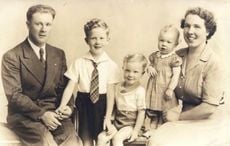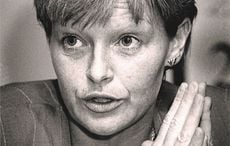| Former NYC Mayor Ed Koch |
“It was like entering Ireland,” recalls Shea. “All the delis and the butcher shops were all Irish.”
But the times they were a’changing. This was 1970s New York City, and even the stalwart Hibernian residents of Kingsbridge could not ignore the crime and chaos that were becoming a brutal fact of life in New York City.
Shea has plowed memories and stories of New York’s good old/bad old days into a vibrant, darkly comic novel called Cut and Run in the Bronx. The book is a very interesting (not to mention very funny) read, particularly this past week, with the passing of three-time New York City Mayor Ed Koch.
Without question, Koch was a dominant figure in 20th century New York City history. Not only that, he had a strong link to New York’s Irish community, always on the March up Fifth Avenue on March 17, and forging a particularly close bond with Archbishop John Cardinal O’Connor.
However, it can’t be ignored that crime spun wildly out of control during the Koch years. Which is not to say Koch, who ran as a law-and-order candidate, could have snapped his fingers and solved this vexing, tragic problem.
Nevertheless, people like Shea’s grandparents were witnesses to not only a chaotic time but also a dramatic demographic shift. This was the era of New York’s much-discussed “white flight,” and the New York Irish -- from Kingsbridge in the Bronx to Bay Ridge in Brooklyn -- were a big part of that.
Shea’s own grandmother had thoughts of leaving Kingsbridge for the leafier environs of Riverdale. But his grandfather would have none of it.
Earlier in the 20th century, it was easy to see the appeal of Irish enclaves such as Kingsbridge. “When they came to this country, it wasn’t that big of a change,” notes Shea, whose novel was put out by the Dublin-based publisher Seven Towers.
“They could get the Irish foods and still have an Irish priest.”
But for many Irish New Yorkers who lived through the Koch years, it was hard to ignore the changes.
Crime was up. Old friends were moving out to the suburbs. Many Irish American city employees may have been laid off -- temporarily or permanently -- during the fiscal crisis of 1975, two years before Koch took office.
Not for nothing does a character in Cut and Run in the Bronx, a veteran cop named Dunphy, view himself as the last of a dying breed, and feel that an era is ending. For many Irish New Yorkers in the 1970s and 1980s, the changes were simply too much.
In the end, especially with the passing of Koch, there is a temptation to look back with fondness and nostalgia.
This is a little surprising, given that we spent quite a few years looking back at pre-Giuliani New York as something akin to Thunderdome without even Mad Max to maintain control.
The truth, of course, lies somewhere in between.
“There’s mixed feelings,” notes Shea, who will be doing a reading at the Irish Arts Center in New York on March 9. “You wouldn’t want to go back to the anarchy of that time.”
But he adds, “There’s always that question -- what did you lose? You look at 42nd Street and it’s just become...a big strip mall, like the rest of America.”
And though many Irish Americans did flee New York in the 1970s and 1980s, many stayed. Some were even charged with the increasingly difficult task of maintaining order.
Shea, who spent nearly two decades teaching at Rice High School in Harlem before it closed in 2011, talked to many retired police officers who also worked at the school. A lot of their stories, as well as his own affinity for the Big Apple, compelled him to set his book in the Bronx.
“Anytime you write about New York, New York becomes a character in the story,” said Shea, whose father’s family came to New York from Kerry. His maternal grandparents are from Cork and Clare.
“And, to me, there’s always been something magical about the Bronx.”
Magical? The Bronx? Yes.
And also a place offering -- shall we say -- a unique perspective on the Koch years in New York.
(Contact “Sidewalks” at tdeignan.blogspot.com or [email protected])




Comments